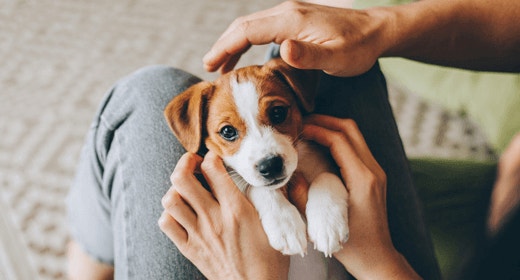

Congratulations! You're the proud owner of a puppy. It's important to take steps now to ensure great puppy health. Louise Murray, DVM, director of the ASPCA's Bergh Memorial Animal Hospital in New York City and author of Vet Confidential (Ballantine, 2008), offers these pointers for your puppy's first year.
Selamat ! Anda bangga memiliki anak anjing. Ambillah langkah-langkah penting sekarang untuk memastikan kesehatan terbaik anak anjing. Louise Murray, DVM, Direktur ASPCA's Bergh Memorial Animal Hospital di New York City dan Penulis Vet Confidential (Ballantine, 2008), memberikan panduan ini untuk tahun pertama anak anjing Anda.
Cari informasi dari teman untuk mendapatkan Dokter Hewan yang dapat Anda percaya. Dalam waktu seminggu setelah membawa pulang anak anjing Anda, bawa dia untuk pemeriksaan. Dokter akan melakukan pemeriksaan fisik dan mulai menyimpan riwayat medis secara rinci.
Saat ini vaksinasi secara berlebihan pada hewan peliharaan menjadi topik hangat, kata Murray. Pertanyaannya adalah, bukan vaksinasi tetapi vaksin yang digunakan dan seberapa sering. Yang dinamakan 'vaksin inti'—untuk parvovirus, distemper, adenovirus tipe 2, dan rabies—sangat penting. 'Vaksin ini melindungi anjing Anda dari penyakit yang sangat nyata, sangat umum, dan sangat berbahaya. Vaksin tambahan mungkin diperlukan berdasarkan tempat Anda tinggal, kemana Anda membawa anjing Anda, dan apakah Anda suka bepergian.
Pilihlah merek makanan anjing yang memiliki reputasi baik dan diskusikan pilihan Anda dengan Dokter Hewan. Di tahun pertama, berilah anak anjing makanan yang khusus ditujukan untuk anjing yang lebih muda dan mereka sebaiknya makan tiga kali sehari, bukan sekali atau dua kali.
Cara yang sangat baik untuk mengatasi kelebihan populasi hewan peliharaan, prosedur ini idealnya harus dilakukan pada usia 4 bulan dan 5 bulan, yaitu sebelum anjing betina memasuki masa kawin pertamanya dan sebelum anjing jantan memasuki masa pubertas. Seekor anjing betina yang disteril sebelum masa berahi memiliki kemungkinan 2.000 kali lebih kecil terkena kanker payudara, kata Murray. Anjing jantan yang dikebiri sebelum memasuki masa pubertas memiliki lebih sedikit masalah perilaku, seperti agresif terhadap anjing lain dan penandaan urin.
Kebanyakan anjing harus menjalani pengobatan sepanjang tahun untuk mencegah cacing hati, infestasi parasit yang mengancam jiwa, kata Murray. Kutu, yang sering dianggap sebagai gangguan, sebenarnya dapat menyebabkan masalah kulit yang parah dan bahkan anemia. Kutu membawa banyak penyakit (termasuk penyakit Lyme dan Rocky Mountain Spotted Fever). Dokter Hewan Anda dapat memberi obat pencegahan yang efektif untuk kedua masalah ini.